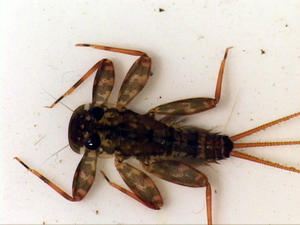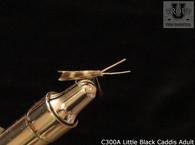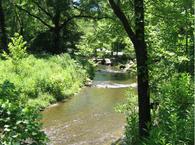
A nymph is a nymph, right? Just tie on a Copper John or Hare's Ear and fish it drifting in the current and you'll be fine, right? Wrong and wrong. In the next few blogs, we'll be taking an in depth look at nymphs and how to fish them properly.
First, consider that the average aquatic insect spends the vast majority of its life as a nymph and only seconds in (or on) the water as an adult or spinner. This suggests that the trout will far more likely see (and consequently eat) aquatic insects as nymphs than dry flies. Translation: You will catch more trout on properly fished nymphs than properly fished dry flies. Therefore, understanding nymphs will help you catch more trout.
Nymphs come in four types: clingers, burrowers, swimmers, and crawlers. In this blog, we will discuss clingers and touch lightly on burrowers.
The burrowers, as their name implies, spend most of their time burrowed into the bottom of the streams. These nymphs are round and long, have large gills for living in lower oxygenated water, and usually have a claw or some other method of digging out their holes (where they live) or in the banks or bottoms of streams. These holes can be from one to six inches deep. Typically, they will only come out at night time, during other low light conditions, or around the time of the hatch. They are found in areas of the stream where the bottom of the stream is soft enough to dig out their burrows or holes. Burrower nymphs prefer slow to moderate flowing water. Most drakes are burrowers, for example.
In faster moving streams, most of the nymphs are clingers, such as many, if not most of the mayflies and stoneflies. These streams, characterized by pocket water and quick moving runs and riffles, provide limited habitat for crawlers and swimmers. Clingers, which need the high oxygen levels of the fast moving water because of their small gills, are flat and can grip the rocks in the stream similar to a suction cup. They have long legs that they use to grip the rocks, and their eyes are on their top, rather than their side. Most of the time, however, these clinger nymphs are under the rocks or in the cracks in the rocks, unavailable to the trout. The exception to this is when the hatch is about to take place. At this time, they become more active, and crawl out from underneath the rocks in the fast water to some closeby moderately flowing water. At this point, they cling to the rocks in the moderate water and emerge into duns. Some species emerge into duns on the stream's bottom; some emerge on the way to the surface; some emerge in the surface skim.
The best time to fish a clinger nymph is between one to two weeks prior to the hatch through the end of the hatch. This can be as much as two months. Longer hatches, however, are less intense, meaning there are fewer nymphs available to the trout. Stoneflies particularly lend themselves to this technique, as they will crawl all the way to the banks of the streams and out of the water to hatch.
Another technique is to fish the clinger nymph pattern as if it's progressing from the bottom of the fast water to the nearest slow or moderately flow water, imitating the actual's insects migration. To do this, cast your fly to the upstream portion of the fast moving runs, weighting it enough to get it to the bottom of the stream quickly, and work it to the closest slow water. For stoneflies, work it all the way to the banks or large rocks where they can crawl out of the water. For mayflies, work the fly to the point where it is just inside the slow portion of the current seams (i.e. transitions from fast to slow water).





